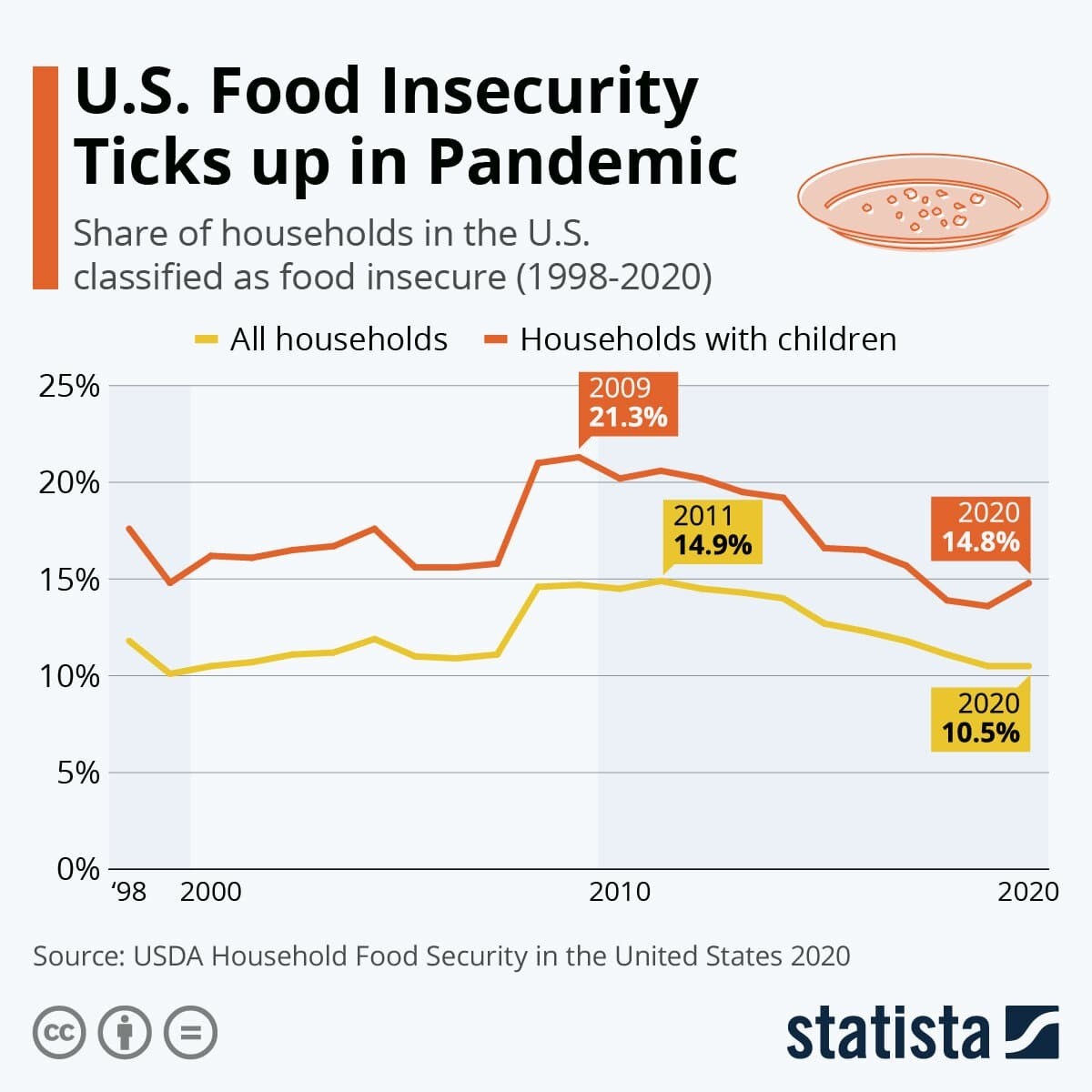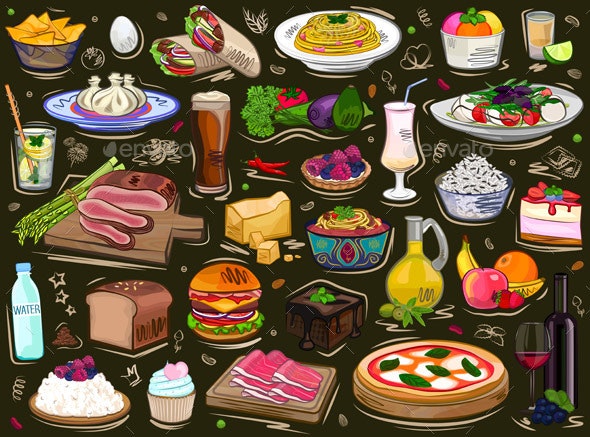Conclusions
With Covid-19 permeating every aspect of life, many people think of themselves and what they can do to protect themselves and their loved ones from the spreading virus. In more fortunate countries where poverty is less of an issue than others, access to essential products and services like hospital treatments and masks are more easily accessible. However, Covid-19 is just another crisis on top of the growing list for those living in poverty. One of the significant crises happening in the world is world hunger. World hunger is not a crisis that is tackled within any timeframe. A monumental effort over many decades, with coordination between countries, can stem the tide of world hunger, but more than that is required to solve it.
As Covid-19 became a pandemic, it was essential to understand how the disease affected those living with some level of food insecurity. It was also essential to know how the disease was affecting food security specifically and whether the effect of Covid-19 on food security could be isolated when other events were happening at the same time.

Isolating the effect of Covid-19
First, it is crucial to understand whether the effect of Covid-19 can be isolated from other disasters happening at the same time in the same place as Covid-19. Several ongoing and relatively unique disasters globally include drought, ebola, and locusts. It is vital to investigate disasters that affect food security but are not causes or effects of each other. So, for example, even though ebola and Covid-19 are both pandemics and affect food security somehow, Covid-19 does not cause Ebola and vice versa. On the contrary, a disaster like a wildfire can be caused by drought, yet wildfires and droughts both affect food security differently. Using the visualization below, each of the disasters and some of their associated words is seen below. Note the relationships each disaster has with food security.
Considering the visual above, each of the disasters is different. Each disaster affects the way of life differently. For example, in the visual under the Covid tab, the word nutrition is emphasized, clearly associated with one of the pillars of food security, utilization. Additionally, supply is emphasized, which is again associated with another pillar of food security, availability. When viewing the tab labeled drought, climate is prominently emphasized, and again, that is associated with a pillar of food security, mainly stability. Finally, when viewing the tab labeled locusts, agriculture is prominently featured, which is associated with access. The outcome is similar when it comes to ebola since it is closely related to Covid-19 in terms of its effects. Considering these four disasters, it is clear that they all affect the four pillars of food security. According to the visual, it was possible to isolate each disaster from one another with some effectiveness. See the graphic below.
By using the above visualization, it is clear to see that it is possible to isolate the disasters from each other with some accuracy and that is backed by data. As each of the colors of the dots on the three-dimensional graph shows, the disasters and their effects on food security are relatively distinct.
Additionally, it is important to understand how different groups of people are affected by Covid-19 and its effect on food security. Specifically, it would be of interest to understand whether people are affected differently based on gender, age group, race, and location. This can be answered for people only within the continental United States as the data exists for the United States but is sparsely collected for other countries, and no conclusions could be made for those. By examining each group of people, the effect of Covid-19 on food security can be seen.
Covid-19 on Age
When looking at how the effect of Covid-19 on food security has affected different age groups, first, it is important to look at how Covid-19 affects different age groups directly. From all of the research on Covid-19 done by many agencies, including the WHO, it is widely agreed that Covid-19 disproportionally affects those of advanced age and those with preexisting conditions. Given that initial assumption, the old age groups should, in theory, be disproportionally affected by an uptick in food security concerns.

Above is a visualization of the effect of food security during periods of lockdown due to Covid and its effect on people of different ages. From the visualization, it is clear that people ages 18-24 tend to answer they get enough food, versus people ages 55-64, and those 65 and above tend to answer surveys indicating they are not getting enough food. For those ages 29-39 and 40-54, it is unclear how they are doing.
Covid-19 on Gender
Next, to understand better how the effect of Covid-19 on food security affects people of different genders, it is again important to start by looking at how Covid-19 affects gender directly. According to several different surveys, including one recently done by Mckinsey, "women are more vulnerable to Covid-19-related economic effects because of existing gender inequalities" [13]. Per this information, women should be affected more than men regarding food security concerns.

However, this visualization seems to indicate the opposite of the initial assumption. According to the visualization, it would seem that females tend to feel safer about their own state of food security during periods of lockdowns caused by covid-19 versus males. Follow-up investigation is required to understand this seemingly contradictory phenomenon.
Covid-19 on Race
Next, to understand how the effect of Covid-19 on food security affects people of different races, again, it is important to first look at how Covid-19 has affected different races. According to the CDC, "Covid-19 data shows that Black/African American, Hispanic/Latino, American Indian and Alaska native persons in the United States experience higher rates of Covid-19-related hospitalization and death compared to non-Hispanic White populations" [14]. Given this analysis from the CDC, it would make sense that those disproportionally affected by Covid-19 would be further affected by food insecurity due to the pandemic.

Using the visualization indicates that our prior assumptions were correct. The White population, seen on the far right of the diagram, answered surveys predominantly indicating they had enough food while other populations clearly did not have enough. Interestingly, the Asian population seemed not to be getting enough food.
Covid-19 on Location
Finally, to understand how the effect of Covid-19 on food security affects people living in different locations, it is important to look at how Covid-19 has affected some of the most hard-hit industries, mainly the manufacturing and food & hospitality industries. Using the visual below clearly shows certain states are affected by Covid-19 more than others.


According to the visual plus some additional investigation (since it is not completely clear), Vermont and North Dakota in both the food manufacturing and food & hospitality industries. Considering that implies a loss of income for the family, and income directly affects the access pillar of food security, states with a high level of unemployment due to Covid-19 were affected by an increase in food insecurity.
Conclusion
In conclusion, Covid-19 has clearly affected food security in a number of ways. When analyzing the data, it was important to understand the effect of Covid-19 on food security and make sure the effect of Covid-19 could be isolated. Once it was clear that Covid-19 was affecting food security, it was important to understand how different groups of people were being affected so that efforts to help those could be targeted. Concerning age, it was clear that people above the age of 55 were more affected than those younger than 24. Concerning gender, males were affected more than females. Concerning race, non-white populations were affected than white populations. Finally, states adversely affected by high unemployment rates due to Covid-19 were more affected than those in states less affected by unemployment rates, especially in the manufacturing and hospitality industries.
During the introduction, a number of questions were asked, and this research is supposed to answer them. With regards to the remaining unanswered questions... When it comes to answering whether Covid-19 has affected food security globally, it is almost certain the answer is yes. However, the data required to answer that question is proprietary and could not be accessed despite multiple requests. Next, when trying to determine if the 2030 goal set by the UN ever be reached, the answer is, as of this moment, almost certainly not. Considering Covid-19 is affecting food security, it is clear that countries need to address Covid-19 before they can address world hunger. Thus the goal will not be met. Finally, concerning the effect of Covid-19 on the food supply and whether it would rebound to pre-pandemic levels, the answer is that in time, probably yes, but this research does not answer that, so it remains unclear. The focus was on food security and did not directly touch the food supply.




